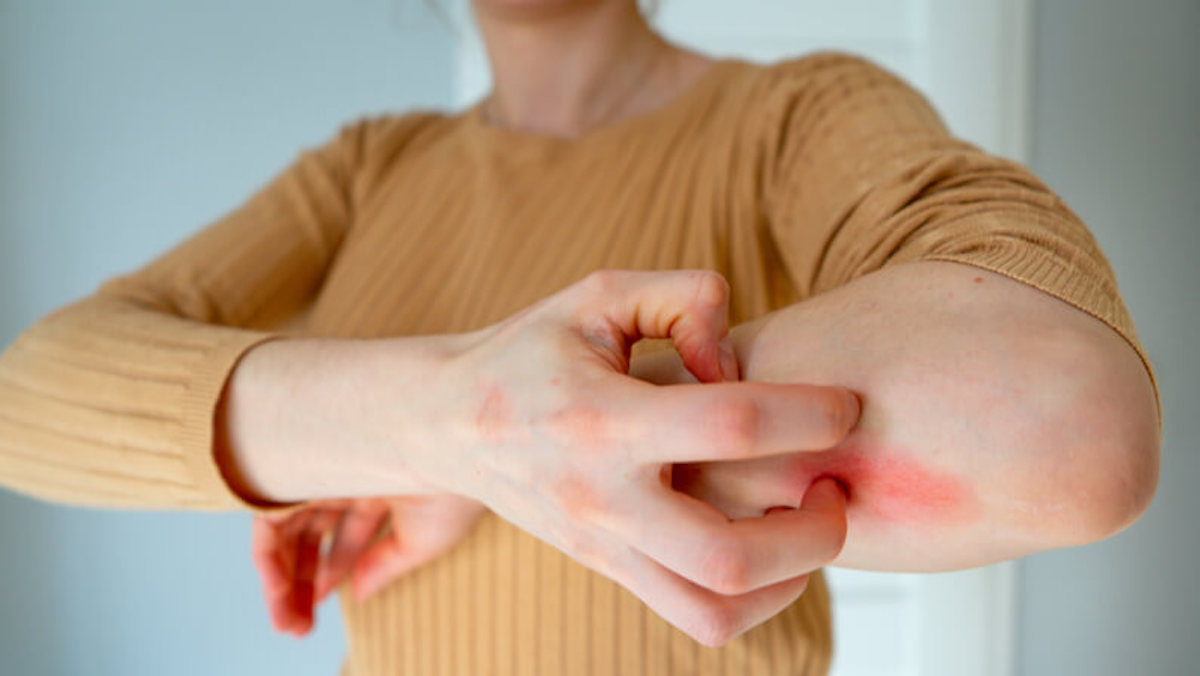Skin rashes are a common symptom that a variety of factors such as infections, allergies, and autoimmune disorders can cause. The seven most common skin rashes include eczema, psoriasis, hives, rosacea, impetigo, scabies, and shingles. The exact number of people in our country affected by skin rashes each year varies depending on the specific type of rash and the population being studied. However, skin conditions such as eczema and psoriasis are pretty prevalent, with estimates suggesting that eczema affects around 31.6 million Americans, and psoriasis affects approximately 8 million Americans. Knowing which skin rash you’re suffering from is incredibly important, as this can tell you what causes the symptom(s) and how the rash should be treated.

Eczema – Atopic Dermatitis
Eczema, also known as atopic dermatitis, is a chronic skin condition that presents as red, scaly, and itchy patches of skin. The skin may be dry, rough, and cracked, with small bumps that may ooze fluid if scratched. It can affect any part of the body, but it is most commonly found on the face, hands, feet, inside of the elbows, and behind the knees. The severity of eczema can vary from person to person, with some experiencing occasional flare-ups while others may have continuous symptoms. It can be severe in some cases, causing the skin to become thickened and discolored. The exact cause of eczema is not known, but it is believed to be a combination of genetic and environmental factors. Some common triggers include stress, certain fabrics, soaps, and certain foods. People with eczema usually have a family history of allergies or asthma.
Psoriasis
Psoriasis is a chronic autoimmune condition that affects the skin, causing plaques of red, scaly, and thickened skin. These plaques can vary in size and severity and can appear anywhere on the body, but they are commonly found on the scalp, elbows, knees, lower back, and genitals. The skin in these areas may be dry, itchy, and painful, and can crack and bleed. The plaques may have a silver or white scale on top of the redness and can be itchy or sore. The plaques can be few and small, or widespread and can even cover large areas of the body. Some people with psoriasis may also experience pitting, discoloration, or thickening of the nails. The exact cause of psoriasis is not fully understood, but it is believed to be a combination of genetic and environmental factors. It occurs when the immune system mistakenly attacks healthy skin cells, causing them to multiply rapidly and form characteristic plaques. It is a chronic condition that tends to have flare-ups and remissions.
Continue reading on the next page, and find out what other common skin rashes look like, what causes them, and how they should be treated.

